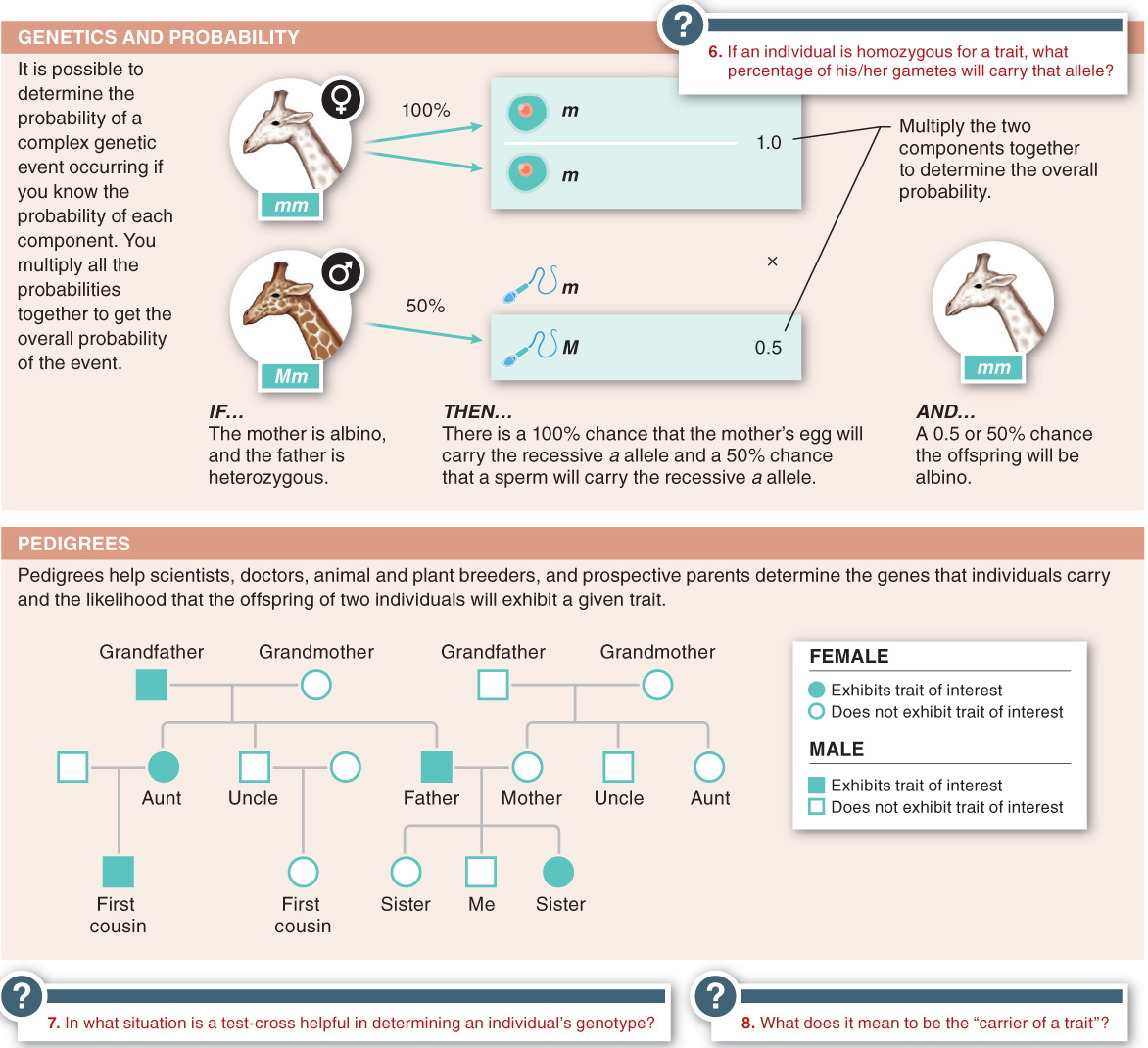7.6–7.8
7.6–Probability and chance play central roles in genetics.
Sometimes genetics is a bit like gambling. Even with perfect information, it can still be impossible to know the genetic outcome with certainty.

Q
In pea plants, purple flower color is dominant to white flower color. If two pea plants that are true-
- a) all of the flowers will be purple.
- b) three-
quarters of the flowers will be purple and one- quarter will be white. - c) half of the flowers will be purple and one-
quarter will be white. - d) one-
quarter of the flowers will be purple and three- quarters will be white. - e) all of the flowers will be white.

Pea flowers may be purple (P) or white (p). Pea seeds may be round (R) or wrinkled (r). What proportion of the offspring from a cross between purple-

- ½

- ¾


The test-
- a) makes it possible to determine the genotype of an individual of unknown genotype that exhibits the dominant version of a trait.
- b) is a cross between an individual whose genotype for a trait is not known and an individual homozygous recessive for the trait.
- c) sometimes requires the production of multiple offspring to reveal the genotype of an individual whose genotype is unknown (but who exhibits the dominant phenotype).
- d) Only a) and b) are correct.
- e) Choices a), b), and c) are correct.

Which of the following statements is correct regarding pedigree analysis?
- a) Darkened squares or circles always represent individuals with the trait being traced.
- b) White squares or circles always represent heterozygous individuals.
- c) Horizontal lines connect siblings.
- d) The length of the vertical lines is dependent on the relatedness between two individuals.
- e) Squares represent females, and circles represent males.

312